Tomatina kicks off on 27th August!
Thursday, August 21, 2025
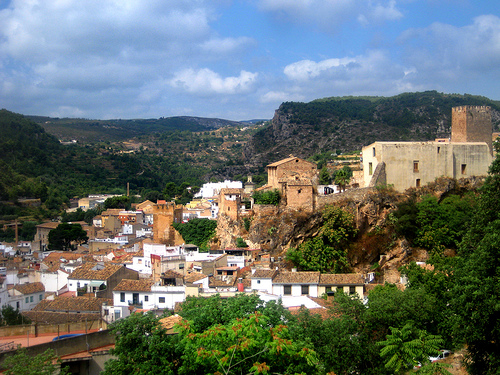 La Tomatina is not far off (27th August) and is one of the Spanish festivities that has still eluded me after so many years and I have it pretty much on my doorstep. Unfortunately, this year will be no different... La Tomatina is not far off (27th August) and is one of the Spanish festivities that has still eluded me after so many years and I have it pretty much on my doorstep. Unfortunately, this year will be no different...
This festivity is relatively recent compared to other Spanish festivities and has become the second most popular festivity outside of Spanish borders and has even been replicated in major cities around the world. Such countries as China, India, Costa Rica, Colombia, the United States, Chile and others all hold their annual tomato battle, so it's not just the Spanish who are a bit crazy, this tomato fever is incredibly contagious. But just how did this unusual festivity come about? I can assure you it has nothing to do with harvests or religious rituals!
It all started on the last Wednesday of August in 1945 when some young people spent the time in the town square attending the “Giants” and “Big-Heads” figures parade, a traditional festivity in the region. The young boys decided they wanted to take part in the parade with musicians, and the locals dressed up as giants.
The exaggerated enthusiasm of these young boys caused one of them to be kicked out of the parade. The participant flew into a fit of rage and started to hit everything in his path and the crowd started to get angry. There was a market stall of vegetables nearby that fell victim to the event and people started to pelt each other with tomatoes until the local forces ended the vegetable battle.
The following year, the young people picked a fight by their own decision but this time brought the tomatoes from home. Although the police broke up the early tradition in the following years, the young boys had made history without being conscious of it. La Tomatina was banned in the early 50s, which was not a problem for the participants, even those that were arrested. But the people spoke out in defence of the Tomatina and the festivity was again allowed with more participants and a more frenetic atmosphere than ever.
The festivity was again cancelled till 1957 when, as a sign of protest, the “tomato burial” was held. It was a demonstration in which the residents carried a coffin with a huge tomato inside. A band that played funeral marches accompanied the parade and it was incredibly successful. La Tomatina Festival was finally allowed and became an official festivity. As a result of the report by Javier Basilio, broadcasted on the Spanish Television Program Informe Semanal, the festivity started to become known in the rest of Spain and consequently the rest of the world, as it is probably one of the most insane festivities you will ever come across.
The actual festivity kicks off at around 10 AM on the last Wednesday of August with the first event of the Tomatina: The "Palo Jabón". This is basically a tall pole that has been smothered in grease. The goal is to climb to the top of the greased pole and recover a Spanish Leg of Ham which is hanging from the top. As this happens, the crowd work into a frenzy of singing and dancing while being showered with water by hoses. Once someone has managed to recover the ham from the pole, the start signal for the tomato fight is given by firing a large water shot in the air and trucks full of tomatoes make their entry.
 
Several trucks empty 1000’s of kilos of tomatoes in the middle of the village Plaza. The tomatoes actually come from Extremadura, where they are much cheaper and are grown specifically for the festivity, being of inferior quality and taste. The tomatoes must be crushed before being thrown so as to reduce the risk of injury and participants are recommended to use of goggles and gloves. The estimated number of tomatoes used are around 150,000kg. After exactly one hour, the fight ends with the firing of the second shot, announcing the end.
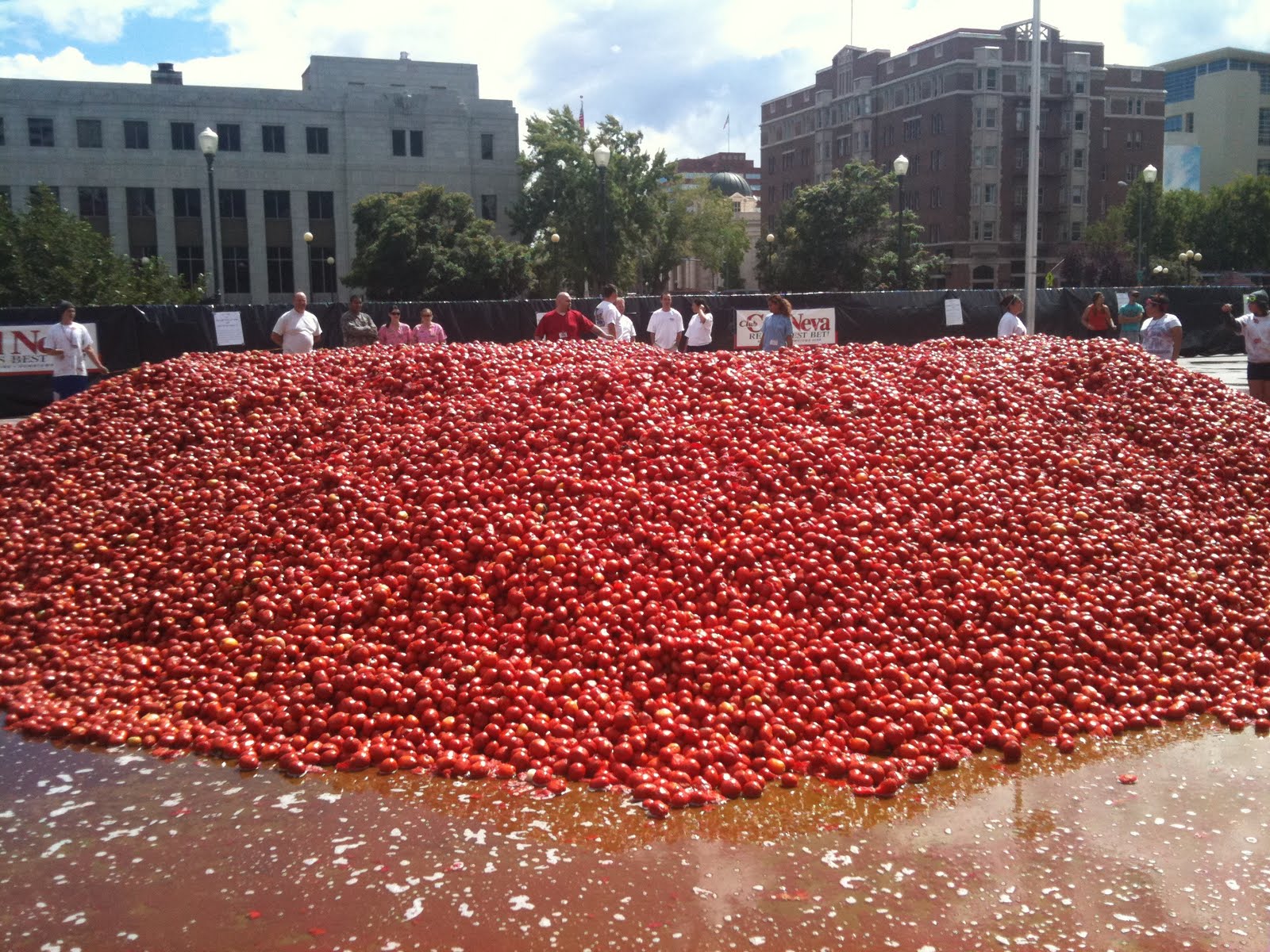
In a question of 60 minutes the whole town square is coloured red and rivers of tomato juice flow deep through the streets. Fire Trucks hose down the streets and participants use hoses that locals provide to remove the tomato paste from their bodies and their front doors!. It is popular for participants go to the pool of “los peñones” to wash off. After the cleaning, the village cobblestone streets are pristine clean due to the acidity of the tomato disinfecting and thoroughly cleaning the surfaces.

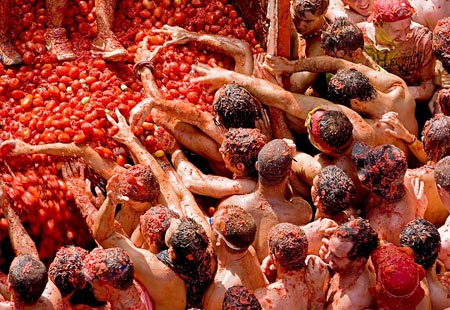
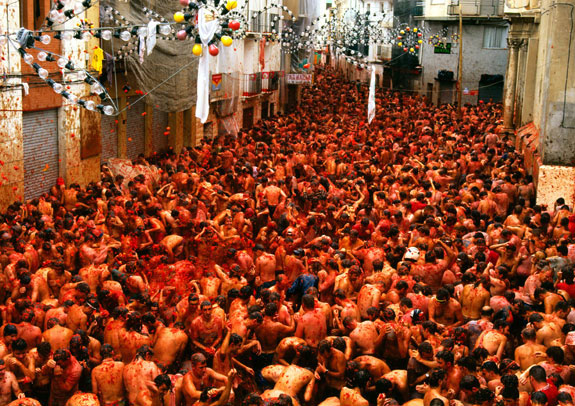
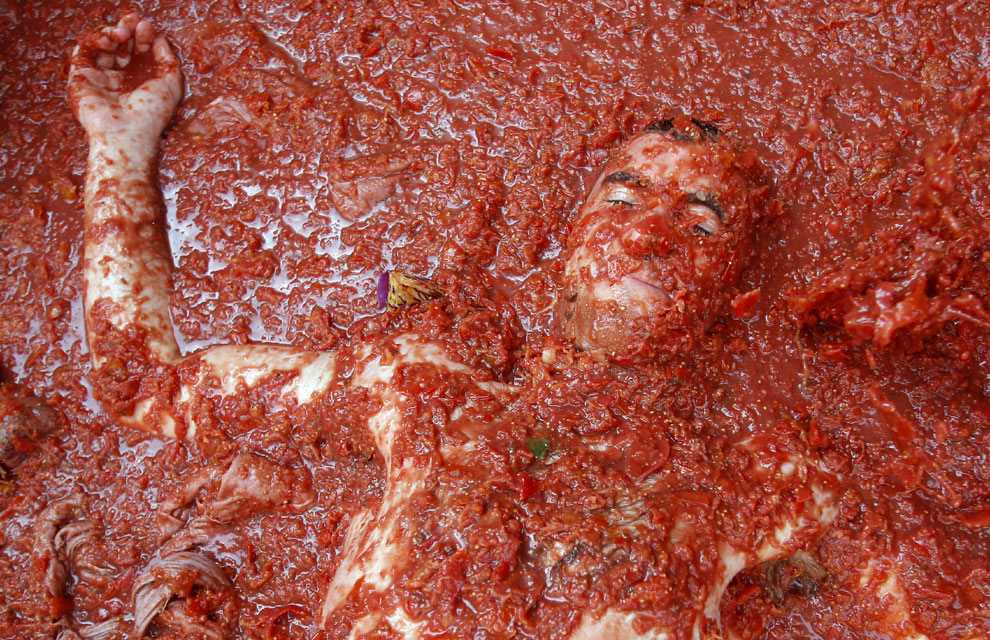
 2
Like
Published at 2:37 PM Comments (1)
2
Like
Published at 2:37 PM Comments (1)
Summer Shellfish - Clams
Friday, August 8, 2025

Clams in 'Salsa Verde' (green sauce) are traditionally eaten as a special dish up north in Galicia, and are a wonderful starter to share with friends and family. This dish makes for a fantastic light summer meal so why not give it a go this August. As is the case with most traditional recipes the quality of the ingredients is the key to a fantastic result.
This is a quick and easy dish to make and will take no more than 20 minutes to prepare if your clams are already clean and free of sand. The ingredients are easy to find but it is essential to use fresh parsley, a good dry and fruity white wine and of course fresh clams not frozen. If you are able to find them Galician clams are the best. I highly recommend using an Albariño white wine or a Ribeiro, both work wonderfully with this dish.
Ingredients to make Clams in Salsa Verde ( 2 people) :
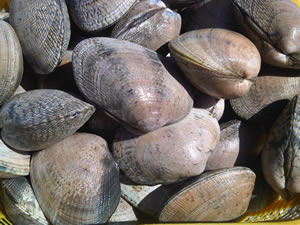 500 grams of clean clams 500 grams of clean clams
125 ml of white wine (Albariño Rias Baixes ó Ribeiro, preferably)
2 cloves garlic large
1 bay leaf
1 tablespoon of wheat flour
3 tablespoons fresh parsley, chopped
4 tablespoons olive oil
1/2 lemon
Salt and pepper
(some like to add 1 small crushed dried chilli – optional)
Before you begin, make sure the clams are clean and have no sand in them. If you bought them already cleaned, great, but if not you will have to clean them. There is nothing worse than chewing on a gritty clam!
So you will need to let them soak in water with salt for 2 hours, changing the water two or three times during that time. Once the clams are clean we can start with the recipe. Peel two cloves of garlic, mince and remove the heart of the garlic. Put them in a frying pan with 4 tablespoons of olive oil and bay leaf. Before they have browned add a tablespoon of flour and stir well. Let the flour brown a little but not burn.
Now add the wine, clams, a pinch of salt (half dessert spoon), a little pepper and sprinkle with two tablespoons of freshly chopped parsley. Cover the pan and leave on medium heat for 5 minutes. After 5 minutes remove the lid and see which clams have opened and remove them from the pan. Once they have all opened and been removed, check if the green sauce needs salt.
Now let the sauce simmer a little more without the lid and the clams, we want to reduce the sauce so it becomes slightly thicker.
We must ensure that the sauce is well blended, so don't remove it from the heat until the sauce is nice and thick, we also want to make sure all the alcohol has evaporated. When the sauce is ready put the clams back in and mix well with the sauce. This will heat the clams up again and then serve immediately. Serve in a bowl and sprinkle with the remaining parsley and accompany it with a wedge of lemon. Some prefer that acidic touch to the sauce that the lemon gives, but I prefer it just as it is. What I will do from time to time is add a dried chili or two depending on the number of clams. This gives it a wonderful kick! You can add the chilli right at the beginning with the garlic, that way it will flavour the olive oil directly.
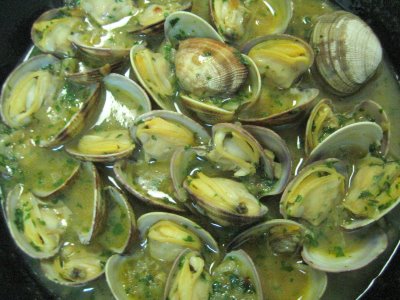
The last thing you must remember is to have plenty of crusty bread because once you have finished the clams there will be loads of delicious sauce to soak up!!
Enjoy!
 2
Like
Published at 7:10 PM Comments (1)
2
Like
Published at 7:10 PM Comments (1)
Spain's Most Refreshing Salad?
Friday, August 1, 2025
Ever since I met my wife, she has been addicted to this "refreshing" salad. Now my daughter is a devout follower too. 'Ensaladilla de limon' it is called and it is something of a tradition in the family and the region from where her family are from - La Mancha. This unusual "salad", if you can really call it a salad, is based on six simple ingredients - Lemon, garlic, paprika, salt, olive oil and cold water. The result of this concoction is surprisingly tasty and moreish. It was a traditional refreshment that the women would take to their husbands during harvest time to calm the relentless heat of the summer. A salad that was designed for dunking bread, with a strong flavour and a strong aroma. I suppose it is the simplest kind of soup/salad you can possibly make. There are variations with tomato and cucumber but the lemon salad is by far the most popular.
It is said to be digestive and commonly believed to have high cleansing properties, so they say back in the village, helping to detoxify the body. Any experts in nutrition will be able to clarify if this is in fact true or not. Either way, it is enjoyable and refreshing when you get the balance right. It is a recipe that you will have tweek and play around with until you reach the balance you like given that these are intense flavours. Obviously, to enjoy this salad you need two prerequisites - you need to like lemon and garlic.
If you do, crack on and give it a go!
Instructions for two people:
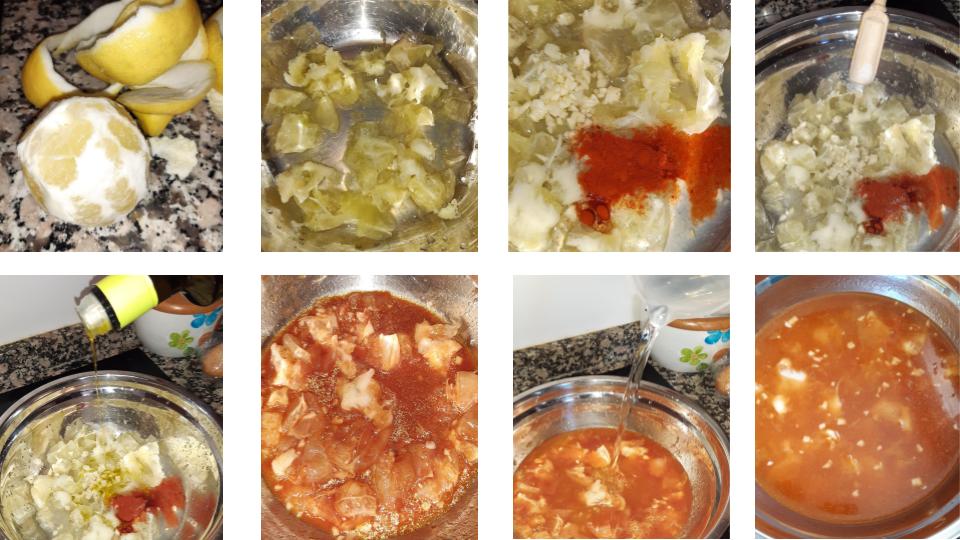
1. Remove the skin from two lemons with a knife and cut them in half.
2. Squeeze them with your hand into a bowl and then chop them up into small pieces and add to the bowl.
3. Finely chop 1 large garlic clove and add to the bowl.
4. Add half a teaspoon of sweet paprika - Pimenton de la Vera is best. - You may add more to taste if you want but it can get bitter so be careful, best to wait until the end.
5. Add a sprinkling of salt.
6. Add a drizzle of extra virgin olive oil - and then blend everything together with a whisk
7. Add 1/2 litre of ice-cold water - add half, and taste and then add the other half. If you feel it is too strong add more water.
8. You can add more oil or paprika at this point to adjust for your liking.
9. If you feel like it, add a couple of ice cubes to keep it cool.
10. Let it sit for a few minutes to "brew", so to speak.
Alternatives - you can also add (or substitute the garlic with) finely chopped spring onion if you fancy that.
All that is left to do now is get dunking with some fresh crunchy bread!
 2
Like
Published at 10:44 PM Comments (1)
2
Like
Published at 10:44 PM Comments (1)
Spam post or Abuse? Please let us know
|
|